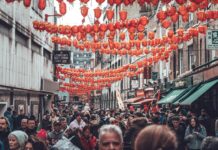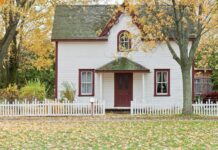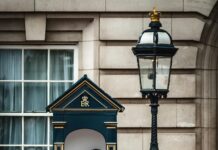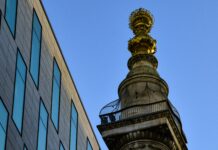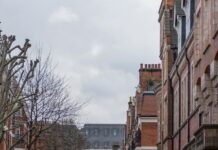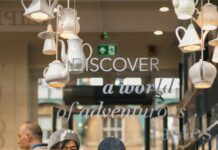Nestled in the mystical landscapes of California, the legendary Wolf House stands as a haunting testament to Jack London’s ambition and creativity. Have you ever wondered about the inspiration behind one of America’s most iconic authors? This historic landmark not only reflects London’s literary genius but also his deep connection with nature and the wild. Built in 1910, Wolf House was envisioned as a grand retreat for London and his family, yet it tragically burned down before its completion. What secrets lie within its charred remains? This intriguing site captivates visitors with its rich history and the undeniable spirit of a man who fought against the odds to live his dreams. By exploring the Jack London Wolf House, you’ll uncover tales of adventure, resilience, and the pursuit of happiness that echo through the ages. As you wander through the ruins, you might ask yourself: How did this place shape London’s most famous works? Discover the allure of this cultural treasure and why it continues to attract literary enthusiasts and history buffs alike. Join us on a journey to unveil the mysteries of Wolf House and delve into the life of one of literature’s most enigmatic figures.
Unveiling the Secrets: What Makes Jack London’s Wolf House a Must-Visit Destination?
Jack London, ya know, that famous author who wrote “The Call of the Wild”, had a bit of a fascination with wolves, and he built a house that reflected this passion. Yup, we’re talking about the Jack London Wolf House, which, surprise surprise, wasn’t just any typical abode. It was a grand vision of what he thought a home should be. I mean, he was a writer, so, clearly, he had some lofty ideas. Not really sure why this matters, but it’s a part of his legacy, I guess.
This place, the Wolf House, was actually constructed in the early 1900s. London wanted it to be a representation of his ideal life. You know, a little bit rustic, a little bit wild, just like his stories. He had dreams of it being this magnificent place filled with all sorts of rustic charm and, get this, he even had plans for a library! Because, of course, what kind of writer would he be without a library? But, as fate would have it, the house never got finished. Imagine that! All those dreams and ambitions just went up in smoke. Literally.
Here’s a little fun fact: in 1913, while the house was still being built, it caught fire and burned down. Talk about a blow to the ego, right? You can just imagine him standing there, watching his dreams go up in flames. It’s like watching your favourite book get turned into a terrible movie. So sad.
If you’re into architecture or, you know, just like looking at old houses, the Jack London Wolf House is an interesting case study. The design was all about blending with nature, which is kinda trendy today, but back then, it was revolutionary. He used local materials and aimed for it to be as eco-friendly as possible, which is pretty neat if you think about it. I feel like he was ahead of his time, but then again, who am I to judge?
Here’s a quick rundown of some of the cool features he had planned:
| Feature | Description |
|---|---|
| Library | A cosy nook for all his literary dreams |
| Large Windows | To bring in natural light, duh! |
| Open Fireplaces | Because who doesn’t love a good fire? |
| Rustic Wood Beams | For that charming, cabin vibe |
| Stone Foundation | Strong and sturdy, just like London himself! |
Isn’t that list just delightful? I mean, it’s not exactly what you’d expect from a guy who wrote about the harshness of nature. You’d think he’d be more into, like, roughing it in a tent or something. But nope! This guy wanted all the comforts of home while still keeping it wild. Maybe it’s just me, but I feel like he was trying to have his cake and eat it too.
Now, about the location – the Jack London Wolf House is situated in the beautiful hills of Sonoma County, California. The views are stunning, and you can see why he picked that spot. Honestly, it’s like something out of a postcard. Did I mention he also had a farm there? The place was called Beauty Ranch, which is just adorable. He had all sorts of animals, and I can only imagine the chaos. Picture Jack, running around chasing after sheep, probably writing poems about the experience.
So, let’s talk about the impact of the Wolf House on the community. It’s kinda funny, really. People were fascinated by this ambitious project, and even after it burned down, the legend of it lived on. It’s like the ghost of the house is more interesting than the actual structure! It became some sort of a tourist attraction, with folks coming to see the ruins and hear the stories. I mean, who doesn’t love a good ghost story?
For anyone interested in visiting, there’s a Jack London State Historic Park where the ruins are located. It’s like a little slice of history, and I guess that’s pretty cool. You can walk around, take pictures, and maybe feel a connection to this literary giant. Just watch out for the wild animals, just in case!
Honestly, I’m not sure what’s more fascinating: the fact that Jack London dreamed of this grand house or the fact that it never came to be. It’s like a metaphor for life, isn’t it? Sometimes, we have these grand plans, and they just… don’t work out. But hey, at least he tried! And now, we get to look back and appreciate the ashes of his dreams. So, if you ever find yourself wandering through the ruins of the Jack London Wolf House, take a moment to think about all that ambition and how life can be just a bit unpredictable.
The Architectural Marvel of Wolf House: A Deep Dive into Jack London’s Vision
Jack London’s Wolf House stands as a testament to the life and dreams of an author who was larger than life. Built in the early 1900s, this place is a blend of ambition and tragedy, much like London himself. Now, I’m not sure why this matters, but here we go, diving into the quirks and tales of this fascinating abode.
So, what is the Jack London Wolf House? It’s basically a big ol’ mansion located in the hills of California, specifically in the Sonoma County. London envisioned it to be a rustic retreat for himself and his family, where they could live, work and, well, write. The thing is, it never really got finished. You’d think, with all the money and time he poured into it, that he would’ve had a cozy little home by the end, but nope.
The construction of the Wolf House started in 1910 and was supposed to be a grand affair. It was designed with all sorts of cool features like stone walls and wooden beams. But here’s the kicker, just when it was about done, a fire broke out in 1913. Yeah, just like that! Poof! All those dreams went up in smoke. Sounds a bit dramatic, don’t ya think? But it’s true.
Now, let’s break it down a bit. Here’s a table of some interesting facts about the Jack London Wolf House:
| Feature | Description |
|---|---|
| Year Construction Began | 1910 |
| Year of Fire | 1913 |
| Architectural Style | Arts and Crafts |
| Location | Glen Ellen, California |
| Current Status | Ruins, part of Jack London State Historic Park |
This table’s a little bare-bones, but it gets the job done, right? And trust me, there’s loads more to uncover about this place.
When you visit the Wolf House, you’ll notice the remnants of what was once a grand estate. The ruins are like the skeleton of a once mighty beast. It’s eerie and beautiful at the same time. I mean, who wouldn’t want to stroll through a place that’s both haunted by history and nature? Imagine walking through the crumbling walls and picturing London himself, pacing around, probably muttering about how to make his next bestseller.
Speaking of which, did you know that London wrote some of his most famous works while living in the nearby Beauty Ranch? Yeah, it’s not just a pretty face—he was churning out stories like “The Call of the Wild” and “White Fang” during his time there. It’s like he had this creative wellspring that just wouldn’t quit! But then again, maybe it’s just me, but I feel like if I lived in a place like that, I’d be inspired too.
Now, let’s chat about the Wolf House’s significance. It’s not just a pile of stones; it represents the ambitions of a man who dreamt big and lived life on his terms. In fact, London’s life was riddled with ups and downs, making the ruins of his home all the more poignant. He was a complex guy, you know? A socialist, an adventurer, a writer, and sometimes a hot mess.
Here’s a quick list of some intriguing tidbits about Jack London and the Wolf House:
- Jack London was born in 1876, in San Francisco.
- He was a sailor, a gold prospector, and even a war correspondent.
- The Wolf House was meant to reflect his love for nature and the outdoors.
- London died at a young age of 40, but left behind a legacy that’s hard to ignore.
- The ruins are now a popular spot for hikers and history buffs alike.
And if you’re thinking about visiting, there’s a visitor centre nearby that provides context and history about the Jack London Wolf House. You can learn about the man himself and the ideas that drove him to build this place. It’s sort of like a walk through literary history, which is pretty darn cool, if you ask me.
But let’s be real; the Wolf House is not just a historical site. It’s also a spot where people can reflect on the nature of dreams and failures. Makes you think, right? Like, how many of us have built our own metaphorical houses only to have them collapse? Okay, maybe that’s a bit melodramatic, but you get my drift.
In the end, visiting the Jack London Wolf House is an experience that’s both haunting and uplifting. The ruins speak volumes about ambition, creativity, and the inevitable challenges of life. So, whether you’re a fan of London’s works or just someone looking for a unique adventure, this place should be on
Exploring the Enigmatic History of Wolf House: What Happened to Jack London’s Dream?
Jack London’s Wolf House is one of those places that’s steeped in mystery and a dash of tragedy, you know? Nestled in the hills of Glen Ellen, California, it’s like a ghost of a dream that never quite became reality. Built by the famous author himself, it’s a stone’s throw from his beloved ranch, Beauty Ranch, which is, frankly, just a name that sounds a bit too good to be true.
So, let’s take a little tour, shall we? Firstly, the Wolf House, constructed between 1910 and 1913, was meant to be his grand home. Not really sure why this matters, but it had grand ambitions, like London himself. The design was a mix of Arts and Crafts style with a rustic flair, and it’s got that whole “I’m an author, and I can do whatever I want” kind of vibe to it. But guess what? It never got finished. Crazy, right?
Now, if you’re thinking, “What’s the big deal about a half-built house?” Well, let me tell you, it’s got a story that’s worth telling. London had a vision, you see, but life had other plans. The story goes that after London died in 1916, the house was struck by a fire just before it was completed. Talk about bad luck! Maybe it’s just me, but I feel like that’s a plot twist straight out of one of his own books.
Here’s a fun fact for ya: the Wolf House was actually built using volcanic rock from the surrounding area. It’s like, “Why use regular stone when you can have something that came from a volcano?” But let’s be real, that rock must’ve been heavy to haul around. I mean, who thought that was a good idea?
In the grand scheme of things, the Wolf House stands as a testimony to London’s ambition and the challenges he faced. The ruins are still there, crumbling yet somehow beautiful. It’s like the house is whispering secrets to those brave enough to visit. And believe me, there’s nothing quite like standing in the midst of those ruins, surrounded by nature, and trying to imagine what life could’ve been like had London finished his masterpiece.
Here’s a quick look at some notable elements of the Wolf House:
| Feature | Description |
|---|---|
| Year Constructed | 1910-1913 |
| Style | Arts and Crafts with rustic elements |
| Materials Used | Volcanic rock, wood from the area |
| Current State | Ruins, partially collapsed |
| Significance | Reflects Jack London’s dreams and ambitions |
You know, there’s this eerie feeling when you walk among the remains. The walls are still standing, but they’re not really saying much. It’s like they’re stuck in a time warp, whispering about what could’ve been. Maybe it’s just me, but I reckon there’s a certain charm in ruins, don’t you think?
Now, let’s not forget about the surrounding area, which is a whole another story. The Jack London State Historic Park offers hiking trails that let you soak in the beauty of the Californian landscape. You can hike up to the House of Happy Walls, which is another one of those fancy names that makes you wonder about the walls’ happiness. It’s pretty much a museum now, showcasing London’s life and work.
Practical insights for anyone thinking of visiting the Wolf House:
- Location: Glen Ellen, California.
- Best Time to Visit: Spring or Fall, when the weather’s nice and the crowds are low.
- What to Bring: Good walking shoes, a camera, and maybe a journal for your deep thoughts about life and writing.
- Things to Do: Explore the ruins, hike the trails, and visit the House of Happy Walls.
So, if you’re in the area, make sure to swing by the Wolf House. It’s not your typical tourist trap, but it’s got a vibe that’s hard to shake off. Plus, you can impress your friends with your knowledge of Jack London trivia. You know, the kind of stuff that makes you seem all cultured and stuff.
In short, the Wolf House is more than just a ruin; it’s a piece of literary history, a glimpse into the life of a man who dared to dream big. And while it may not be the grand home he envisioned, it’s definitely a place where his spirit lives on, haunting us with stories yet to be told. So, what are you waiting for? Grab your hiking boots and go explore!
7 Fascinating Facts About Jack London’s Wolf House That You Probably Didn’t Know
In the heart of California, there lies a crumbling monument to one of America’s most famous writers, Jack London. You might of heard of him, right? Well, he built this ambitious place called Jack London Wolf House. Now, this ain’t just any ol’ house; it’s a piece of literary history, if you can call it that. The story of the Jack London Wolf House is as convoluted as a soap opera plot, and honestly, it’s a little weird.
So, what’s the big deal about this place? Well, Jack London, he was a man of many talents, a writer, a journalist, and even a social activist. He was born in 1876, and he had a thing for adventure, which is why he decided to build this epic home in 1905. But here’s the kicker — the house never really got finished. Can you imagine? You pour your heart and soul into a project, and in the end, it’s just a pile of bricks. Not really sure why this matters, but it’s kinda like starting a novel and never hitting ‘send’ on that final draft.
Now, let’s dive a little deeper. The Jack London Wolf House was designed to be this grand structure, with a mix of styles that reflected London’s love for nature and the rugged beauty of the California landscape. I mean, it was supposed to be all fancy with natural materials, big windows, and even a fireplace that could rival your grandma’s. But then, tragedy struck in 1913. A fire broke out, and poof! There went all those dreams of living the high life. Maybe it’s just me, but I feel like that’s a metaphor for life or something.
Here’s a table that breaks down some key facts about the Jack London Wolf House:
| Year | Event |
|---|---|
| 1876 | Jack London is born |
| 1905 | Construction of Wolf House begins |
| 1913 | Fire destroys the unfinished house |
| 1916 | Jack London dies |
| 1970 | Site becomes a state historic park |
You see, London had big dreams for this house. He envisioned it being a gathering place for friends, fellow writers, and maybe a few admirers. It was gonna be the place where ideas flowed like cheap wine at a party. But alas, his vision went up in smoke, literally. It’s almost poetic, if you think about it, which is probably what London would have wanted.
Now, if you ever find yourself wandering through California’s beauty, the Jack London Wolf House is a must-see. It’s located in the Jack London State Historic Park, which is a whole lot of nature combined with a sprinkle of literary genius. You can hike, take in some fresh air, and stare at the ruins while pondering the meaning of life or whatever floats your boat.
Here’s a quick list of things you can do when visiting:
- Explore the ruins: It’s a bit like walking through a time capsule.
- Hiking: There’s trails for days, so lace up your boots.
- Picnic: Bring some sandwiches or whatever and enjoy the scenery.
- Visit the museum: Learn more about Jack London, the man, the myth, the legend.
- Take photographs: The ruins are super Instagrammable, if that’s your thing.
The local flora and fauna adds a touch of magic to the place, making it feel like you’ve stepped into one of London’s wild stories. I mean, the scenery alone can inspire a thousand poems, or at least a couple of bad haikus.
And let’s not forget about the visitors. The Jack London Wolf House attracts all sorts of folks, from die-hard fans to curious tourists who just happened to stumble upon it. Sometimes I wonder if they even know who Jack London is, or are they just there for the ‘gram? You never know!
In the end, the Jack London Wolf House stands as a testament to ambition, dreams, and the unpredictability of life. It’s a reminder that sometimes, things don’t go as planned, but that doesn’t mean they’re any less valuable. So, if you’re ever in the area, don’t skip out on visiting this unique piece of history. It’ll make you think, laugh, or maybe just scratch your head in confusion.
How to Experience the Spirit of Adventure at Jack London’s Wolf House: A Visitor’s Guide
Jack London’s Wolf House is, like, a fascinating piece of history that not many people seem to know about. I mean, it’s not exactly your run-of-the-mill tourist spot, is it? Located in the hills of Glen Ellen, California, this place was meant to be the writer’s dream home. But, spoiler alert: it didn’t quite work out as planned.
So, picture this: Jack London, the literary genius behind classics like “The Call of the Wild,” decides he wants to build a house that reflects his wild spirit. He had this idea for a grand place, with Wolf House architecture that would be a blend of rustic charm and modern comforts. However, things didn’t go as he had hoped. Maybe it’s just me, but it feels like every grand vision has a bit of a hiccup, doesn’t it?
The construction started in 1910, and London was really into it. He even had a vision for how the place would be. There were supposed to be stone walls, big windows to let the sunlight pour in, and even a library that would make any bookworm drool. But, here’s the kicker: the house was never actually finished. Why? Well, that’s a bit of a long story.
You see, Jack London was known for his adventurous spirit, but he was also prone to some financial troubles. He invested a lot into the Wolf House project, but, in the end, it seems like he just couldn’t keep up with the costs. It’s kind of ironic, isn’t it? A guy who wrote about survival in the wild couldn’t survive the wilds of his own finances.
The house was finally completed, but only after London passed away in 1916. It was a fire in 1913 that ultimately left the structure in ruins. I mean, can you imagine? All that hard work, all those dreams, and then… poof! Gone up in smoke. Not really sure why this matters, but it kind of highlights the unpredictability of life, doesn’t it?
Now, if you’re thinking of visiting Jack London’s Wolf House, you’re in for a treat. Even in its ruined state, the place has a certain charm. Here’s a few things you might want to check out:
Things to See at Wolf House:
- The Ruins: Honestly, it’s kind of haunting but beautiful. You can see where the walls used to be, and it gives you a sense of what London was dreaming of.
- The Landscape: The views are absolutely stunning. I mean, who wouldn’t want to sit back and take it all in?
- The History: There are plaques and signs that tell you the story of Jack London, his life, and his aspirations for the Wolf House. It’s a bit like a history lesson but way more interesting.
Now, let’s talk about the practical bits. If you’re planning a visit, you might wanna know a few things.
| Tips for Visiting Wolf House | Details |
|---|---|
| Best Time to Visit | Spring or Fall when the weather’s nice. |
| Entry Fee | Usually free, but double-check before you go! |
| Getting There | Located in Jack London State Historic Park. A bit of a hike, so wear comfy shoes. |
| Guided Tours | Available on weekends, so check the schedule. |
Kinda makes you wanna pack your bags and head out, right? Just imagine wandering around the ruins, soaking up the history and maybe feeling a bit of that London spirit.
So, what’s the deal with the name “Wolf House,” anyway? Some say it’s because of London’s love for wolves, which he often wrote about. Others think it’s just a catchy name he came up with. Either way, it adds to the mystique of the place.
Another thing worth mentioning is that Jack London’s Wolf House is surrounded by a natural beauty that’s just… well, breathtaking. You’ve got vineyards, rolling hills, and an overall vibe that screams tranquility. If you’re looking to escape the hustle and bustle of everyday life, this is the spot.
In summary, visiting Wolf House isn’t just about seeing the ruins of a famous writer’s dream home. It’s more like stepping into a piece of history where you can feel the echoes of the past. And who knows? You might just find a bit of inspiration yourself. Just don’t forget to take lots of pictures—because, let’s face it, you’ll want to show off your visit to your friends. They’ll be green with envy, I reckon!
Conclusion
In conclusion, Jack London’s Wolf House stands as a testament to the author’s adventurous spirit and profound connection to nature. Built in the early 20th century, this ambitious project reflected London’s aspirations and his love for the rugged beauty of California’s landscape. Though the house was tragically destroyed by fire before he could inhabit it, its ruins continue to attract visitors fascinated by London’s life and literary legacy. The site not only offers a glimpse into the personal life of one of America’s most celebrated writers but also serves as a reminder of the impermanence of human ambition. For those seeking to explore the intertwined narratives of literature and history, a visit to Wolf House is an enriching experience. We encourage readers to delve deeper into Jack London’s works and consider a pilgrimage to this evocative site, where the echoes of his adventurous life still resonate amid the ruins.



